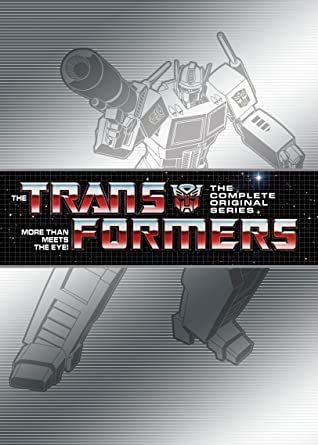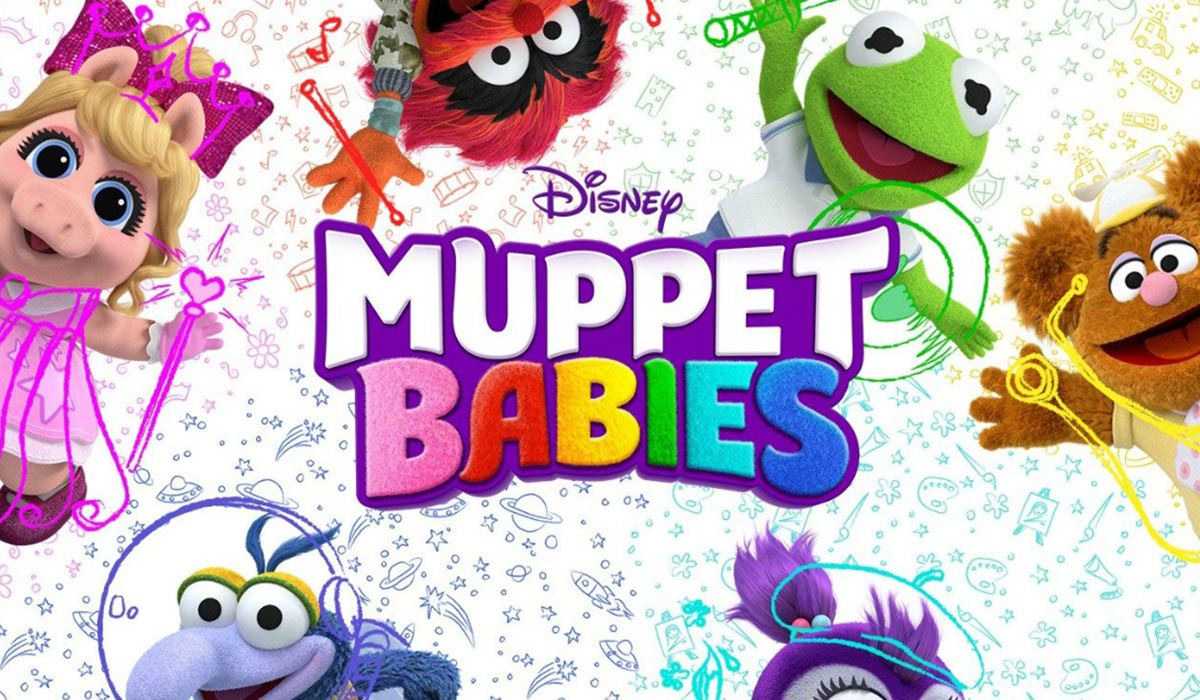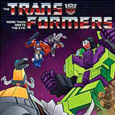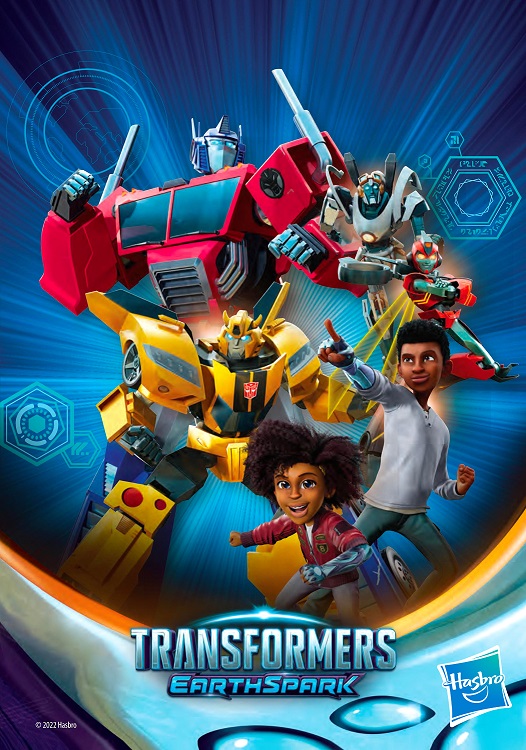 Paramount+, Nickelodeon, and Hasbro’s Entertainment One (eOne) are launching, on November 11th, an original animated series. Transformers: Earthspark introduces a new generation of Transformers robots – the first to be born on Earth – and together with the human family who welcomes them in and cares for them, they’ll redefine what it means to be a family.
Paramount+, Nickelodeon, and Hasbro’s Entertainment One (eOne) are launching, on November 11th, an original animated series. Transformers: Earthspark introduces a new generation of Transformers robots – the first to be born on Earth – and together with the human family who welcomes them in and cares for them, they’ll redefine what it means to be a family.
It’s a fresh start for a definitely new take on the franchise, including the musical point of view, as the creators of the series appealed to Crush Effect to compose and perform the series’ soundtrack.
Crush Effect, consisting of music duo Jesse Molloy and David Veith, makes genre-bending music that spans from nu-funk to nu-disco to electronic Motown. Their experience with production and live music runs deep, as David plays keys for Rolling Stone’s Karl Denson (Tiny Universe); and Jesse plays sax for Panic! At The Disco, among other myriad music credits.
Transformers: Earthspark marks Crush Effect’s first foray into composing, and the creative team gave them the freedom to compose a cinematic, synth-heavy score for the series pulling sounds from modern cyberpunk, EDM, and the dance world.
Considering such an intriguing proposition, we were anxious to talk with them to learn more about that artistic adventure that promises “more than meets the eye”.
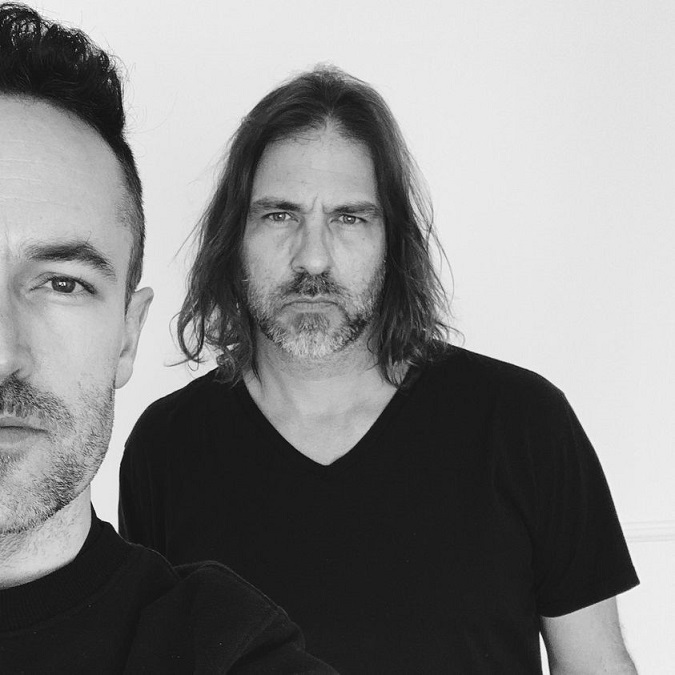
Animated Views: How did you go from record and music production to animation?
David Veith: It was kind of a slow process. Jess and I started on this adventure to get into film and TV about four or five years ago and we got to it in a backwards way. Aside from our records, Jesse and I do a lot of producing, we produce other people and we met who is now our agent, Lee, on some other’s project. He really liked our work and he thought there was something cinematic about what we do sort of naturally and he asked us if we would like to pitch for TV or film. Of course, we agreed because it was like a childhood dream. So, Jesse and I built up our reel, pitching for some pilots and TV shows, that kind of thing, and Lee got us a few pitches for Nickelodeon for some of their projects. Then Transformers popped up. It seemed like it was gonna be a good fit. Luckily for us, the creative team over there really wanted to go onto a direction that Jesse and I did naturally. They were so great. You can imagine Tranformers as a big franchise, and it’s Nickelodeon, too, and they were gonna give it to these two guys who had never done animation before and who were not TV professionals at all. But they liked the music enough and gave us a shot, and it worked out! It was so exciting for Jesse and I when we got the job. We were ecstatic!
Jesse Molloy: It was so cool! This project had people like Ciro (Nieli), Ant (Ward) and Dale (Malinowski) who were willing to take a risk and go with us on this. They believed in what we could bring to the show in terms of sound. Man, it was just super exciting for us! We had a lot of fun working on that.
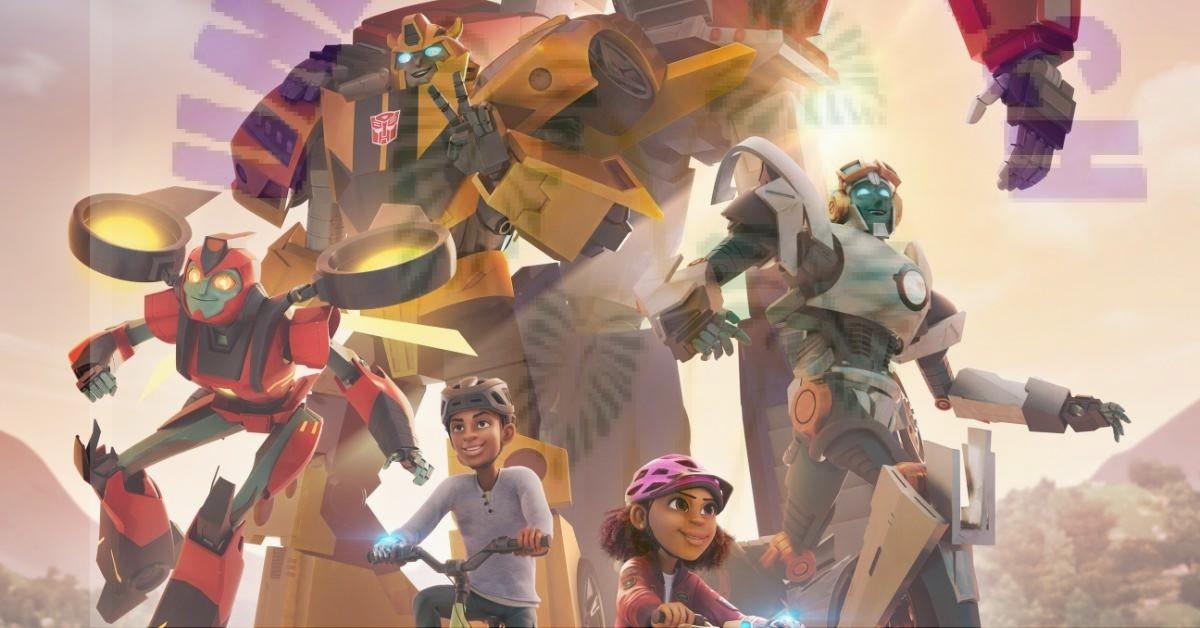
AV: From then on, what was your first move? The sound? The themes?
DV: It was kind of all of the above. When we got the job, they called us and we were hoping to start right away, but because it was the holidays last year, we didn’t really get started with our first creative meeting until February. Ciro, Ant and Dale gave us the overall arc of the characters in the entire season and they told us they wanted something thematic and to punch up musically because they didn’t want it to sound like a kids’ show. When things go dark, they wanted to really go dark, which was really cool. Then, they basically gave us six weeks from that meeting to when we delivered the music for the double pilot episode and they didn’t want to listen to any of our cues until then. They wanted to watch the whole thing. That was nerve-racking for Jesse and I because we didn’t know if we were going in the right direction, and we could get fired right after being hired! But it was a risk for them, too, because it could have been a disaster, and six weeks wasted. But they were super happy with what we came up with. And now, we’re with episodes 17 and 18, and we still use thematic material that was written during those first six weeks. So, it was kind of a trial by fire.
JM: The guys at Nickelodeon really wanted to see what we could deliver all at once. It was nerve-racking but also exciting to just dive into the world they laid out. We were like kids in a candy store, or like being on a mission for something. We had to use our intuition for make sure we were on the right track and then there was a bird-eye view to make sure we were in the world we were after.
AV: Animation is a very specific kind of art. How did you find your methodology to work within that realm?
DV: Their original approach was, they didn’t want it to be a normal cartoon with non-stop music and some mickey-mousing going on. They wanted it to feel a little bit more cinematic. So, when the music does come on in certain situations, they really wanted to feel it in a way. So, we would pick big moments, and those big moments felt like tracks almost. We were still scoring, but with that kind of feeling as opposed to traditional animation music in which music follows the action in such a way that it almost becomes sort of a background noise you immediately forget. They really wanted it to mean a little bit more.
And once we got on the dub stage, we gave them a lot of options musically, so they could edit things according to what they wanted. They really responded positively to that kind of dynamic from us, and it worked. Everybody was super happy. You learn by trial by doing this now every week. You learn pretty quickly little tricks to get into a scene, more elegant ways to get in and out of things, to shift emotionally on certain stuff. We kinda fell into that. And, you know, Jesse and I always loved movies and TV and soundtracks, too, so, we kinda have a sense of what we like, things added to pictures that we like, and we sort of followed those trajectories.
JM: Also, I think it was the right time for us running into Ciro, Ant and Dale, because our hybrid approach where we have been making records while spending some years on a mission to write to picture and to score. And it was also just a good match. We just got lucky to become part of such a great team.
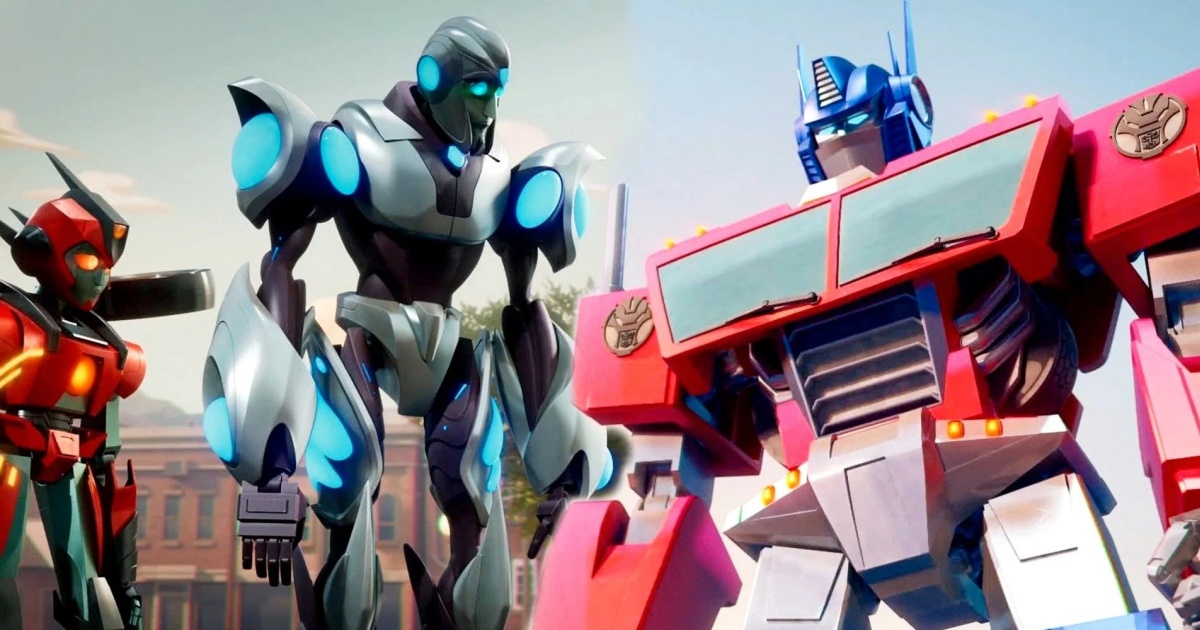
AV: How did you find the sound of the series?
JM: I think for Dave and I, that nostalgia-meets-modernity approach and very synth-driven world come from when we watched the family interact on the picture. I wanted to go back to that feeling, all this excitement when we watched those movies in the 80s which you want to watch again. Because it gives you a nostalgia or an aesthetic that you remember. I felt that big undertow of sound coming from that period. So, we wanted to grab that, getting inspired by the way they used music at that time and adapt it to the idea that it’s about new Transformers.
DV: When we started, they had a pretty good world musically where they wanted to live, especially Ciro, based on Tangerine Dream and Wendy Carlos’ Tron soundtrack, also some of the stuff that Atticus Ross does with Trent Reznor, like in the Watchmen series. They had a really cool hybrid world that they wanted to go in. So, we kind of took a lot of cues from that and did our own thing. We didn’t want it to sound like an 80s retro soundtrack, but we wanted to pull from those technics and sounds from that time, and mix them in with a lot of sounds from today. Something ironic with a lot of those sounds is that modern pop now is a nice blend of those concepts, too.
AV: That blending does echo the storyline of the series itself, as it is about the meeting of the old generation of Transformers with a new one.
DV: Definitely. We tried not to go to hard into one direction, but make a nice blend. The music of the original show now seems nostalgic and dated, but at the time it was the modern sound of the 80s cartoon with crazy riff guitar stuff. So, we did our own version of what modern is, plus pulling back into that world of Transformers.
AV: Did you use any vintage material to resume that 80s sound?
DV: I would say, for convenience, most stuff we do is in the computer. We’ve got some analog synths, but working remotely, Jesse would have to get the same ones, and so on, so it would not make sense regarding the constraints of animation scoring. Now, we have software that really feels like the original stuff, so we just had to make sure we were on the same software and share the same palette. It made things a lot easier for us, while making sure we have the very sound we wanted to have.

AV: Can you tell me about your thematic approach?
DV: For the first couple of weeks, Jesse and I just tried to come up with thematic ideas for either characters or places or family. It was a kind of a cross between melodic and sonic. Sometimes, it’s just a sound like when we get to a place where we can play sounds that fit the characters. Sometimes, it’s definitely a melodic thing and we try to break those down into very small bits that we can use in a lot of different ways. Most of our motives are maybe four notes, five notes, not like long-sweeping John Williams thematic stuff. For us, it made more sense to keep them much shorter because you can use them in a lot of different ways for this particular style of scoring.
JM: It’s funny because, sometimes, creating an atmosphere, you get a melody coming out of it, and you realize that it actually fits the character. I remember in the first pilot, there was this big action scene, and I would be just like “let’s get these very heavy drums! Something really driving!” And then some melody would come out of that, and you just want to add to it and work on it. It’s funny what comes out of melodicism and sound design altogether.

AV: Your music can be so magical at some times, like in the cave sequence of the pilot, and at the same time it can get so much darker than in any other animated series.
JM: Growing up, I had this backyard that, for me as a kid, was enormous. When I see it today, it’s the smallest backyard you’ve ever seen. But as a kid, it was huge. I just loved to go there and use my imagination to live adventures. When I saw that cave scene, I remembered that feeling in my backyard, thinking : this is my world. Anything can happen here. What’s fun about writing music to picture, is that I could re-live some of those of emotions, even in the smallest ways. So, there’s some magic in Earthspark in that way that you can really talk to families and kids and find things that can resonate for everyone.
DV: That cave scene was one of the first big scenes that we scored. Jesse did a lot on that one. He found the sound for it, and when we went back and listened to it, we felt we could use a lot of that for the Terrans and the kids, too. It felt right in that way. And then we knew we wanted to contrast that when things go dark. The creative team pushed us to go as dark as we possibly could, and as much as we could in that kind of series. There’s that kind of balance in that show which can be “feel good” and also like “high stakes” with either action or dark drama. It’s a nice contrast, I think.
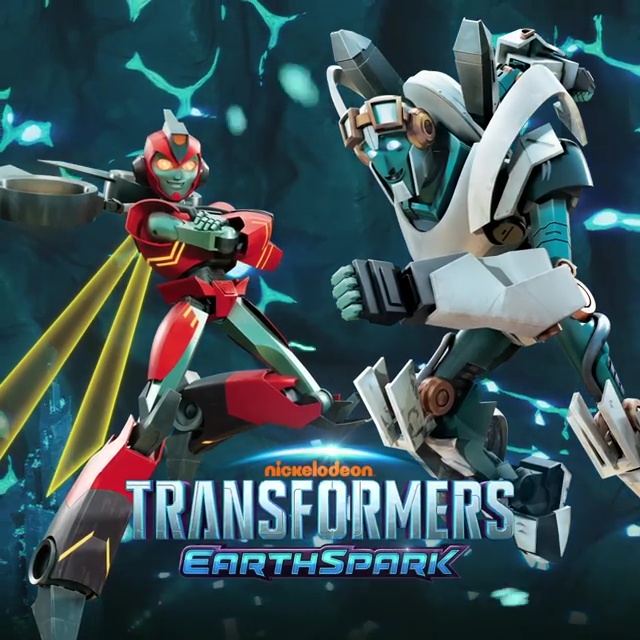
AV: How do you share the work as a duo?
DV: Jesse and I have been working together remotely for a decade, writing ideas and sending them back and forth to each other. During the pandemic, we moved from San Diego to LA. When we got the show, we wondered how we would do it. But we just did like we always did. We have a meeting before every episode with the creative team, and then Jesse and I have our own meeting after that. We go through the cues. Usually there’s more than one storyline in one episode. So, we decide who takes storyline A and storyline B, and then when they interconnect, we make sure that we do that in a cohesive way. As we write, we send movie clips back and forth to each other and make comments. We have a good creative flow. Thank goodness we have high speed internet!
JM: It’s kind of a second nature for us in a way. You put us on a mission, be it a track for a rapper or a singer, or something for a commercial, or Transformers: Earthspark, and we’re on. It’s just like getting money from your parents and going to the candy bar!
AV: It seems you really had fun on Transformers: Earthspark. Would you like to continue that kind of cinematic adventure?
DV: 100%! Jesse and I have been doing music for decades in different formats, whether it’s playing live, touring, producing, writing, commercials… now it seems like a natural progression. It’s so much fun and so creative to do. We’d love to keep doing this. I’d love to score live action, because it’s so different from animation. We like edgy things. That doesn’t mean dark but something you wouldn’t expect, sonically.
JM: 10 years ago, I wouldn’t have imagined to live something like that! I come from live music. I’m on tour right now. Then, we got this incredible creative progression together making so different things. And now, we use all those experiences in that new adventure. So, I agree. We got the bug! We got the bug!
With our thanks to David and Jesse, and to Andrew Kopp and Yefan Zhang at White Bear.



